“The Blood Collages of John Bingley Garland (ca. 1850–60)”
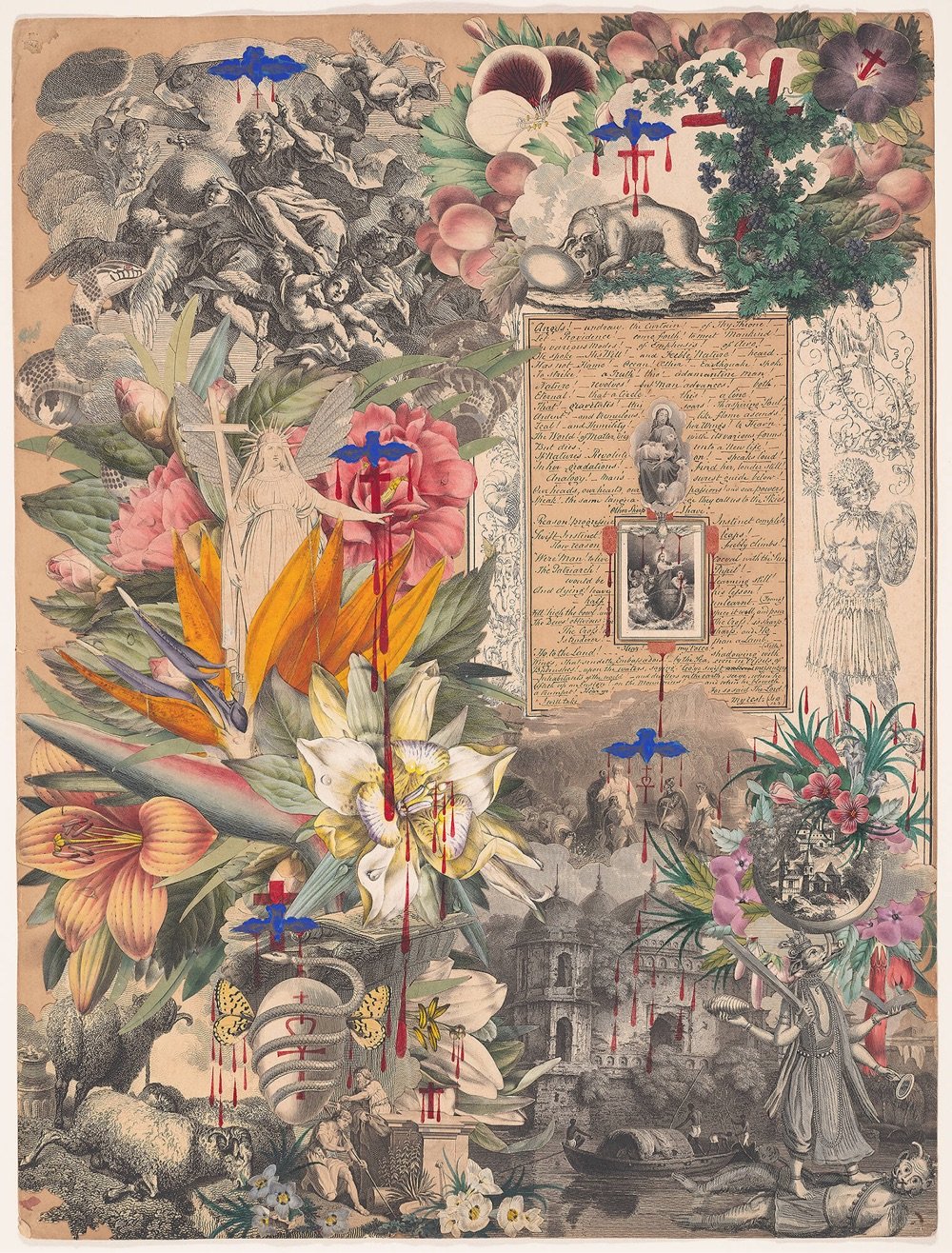
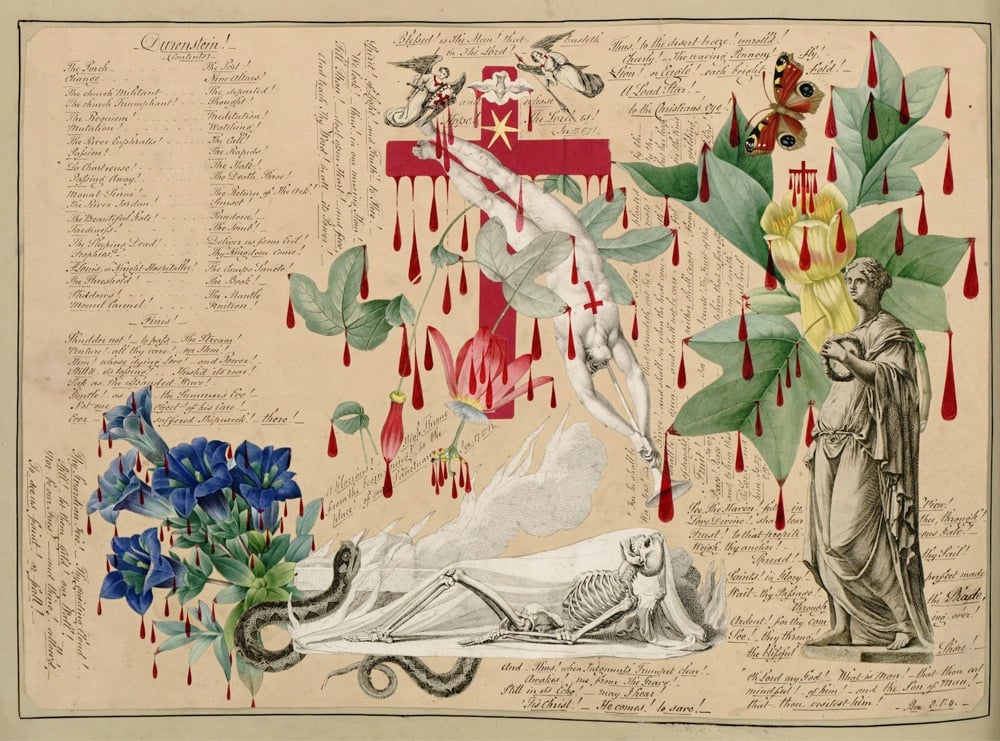
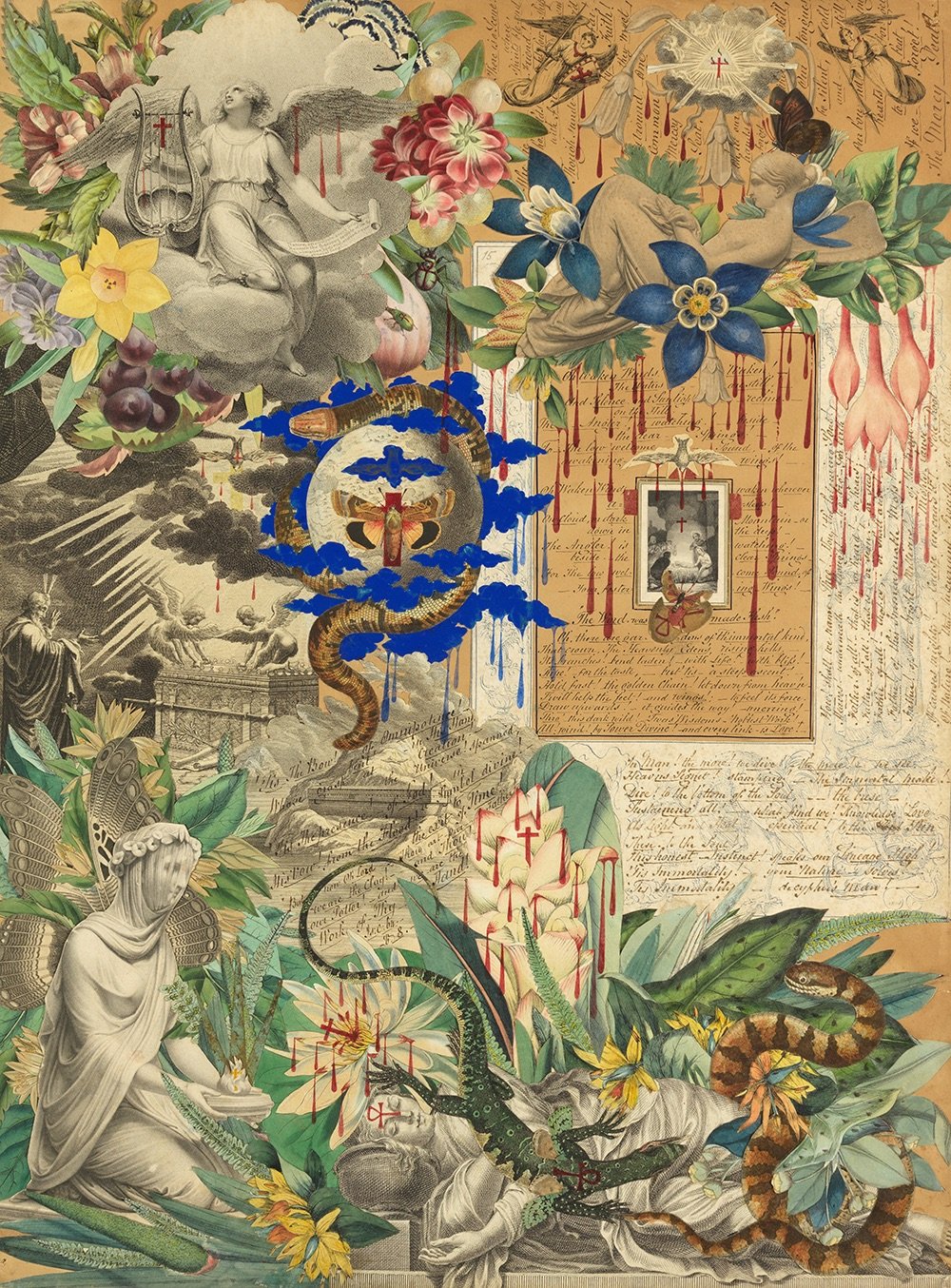
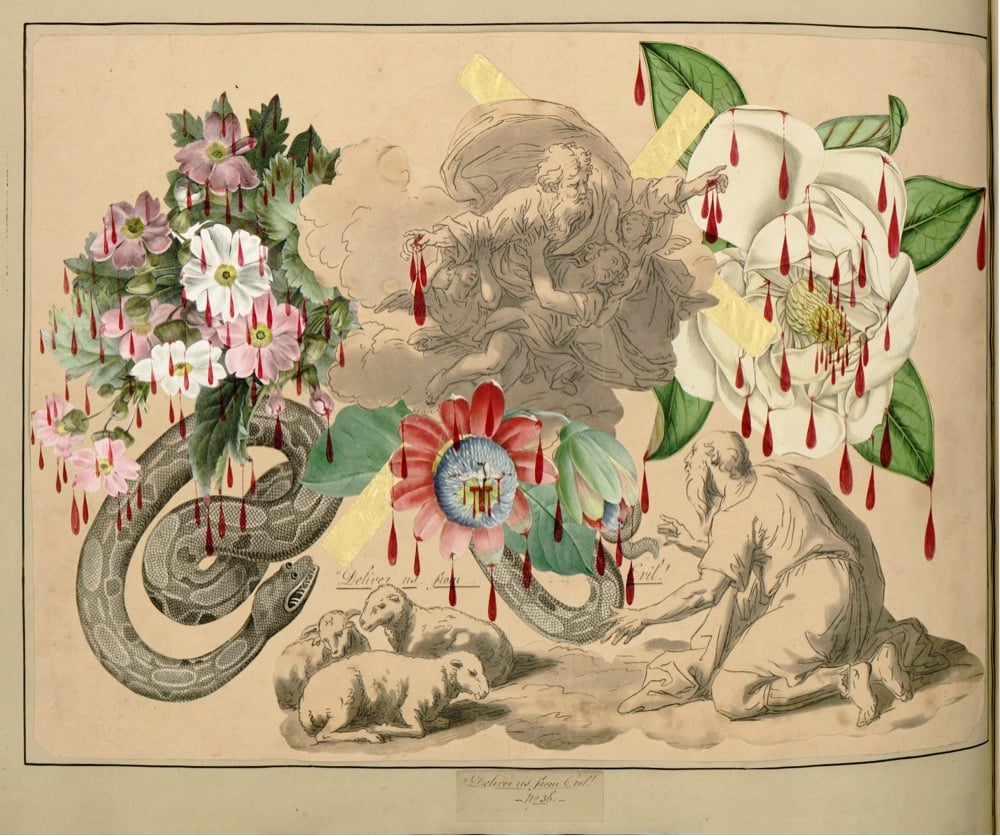
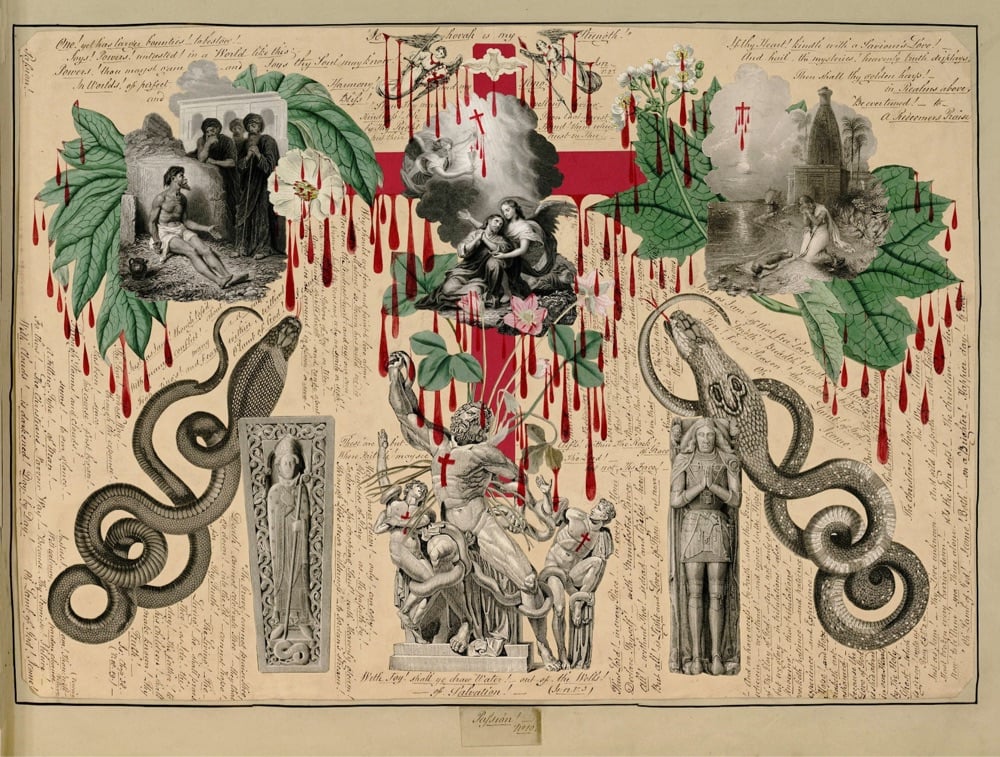
I don’t know about you, but the title “The Blood Collages of John Bingley Garland (ca. 1850–60)” made me click pretty damn fast to see what sort of Victorian age shenanigans this dude was up to. From the Public Domain Review:
The Blood Book is handmade, folio-sized, with a handsome marbled endpaper and forty-three pages of exquisitely crafted decoupage. John Bingley Garland, the manuscript’s creator, used collage techniques, excising illustrations from other books to assemble elegant, balanced compositions. Most of the source material is Romantic engravings by William Blake and his ilk, but there are also brilliantly colored flowers and fruits. Snakes are a favorite motif, butterflies another. A small bird is centered on every page. The space between the images is filled with tiny hand-written script that reads like a staccato sermon. “One! yet has larger bounties! to bestow! Joys! Powers! untasted! In a World like this, Powers!” etc.
The book’s reputation, however, rests on a decorative detail that overwhelms: To each page, Garland added languid, crimson drops in red India ink, hanging from the cut-out images like pendalogues from a chandelier. Blood drips from platters of grapes and tree boughs, statuaries and skeletons. Crosses seep, a cheetah drools, angels dangle bloody sashes. A bouquet of white chrysanthemums is spritzed.
To be clear, Garland’s blood is not that of surgery or crime or menses, but of religious iconography. He obviously intended the blood to represent Christ’s own.
The Blood Book are strikingly modern; as PDR states, Garland uses “techniques usually dated to Cubism in the early twentieth century” to make his collages. I love running across seemingly out-of-time objects like this.





Stay Connected